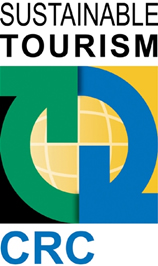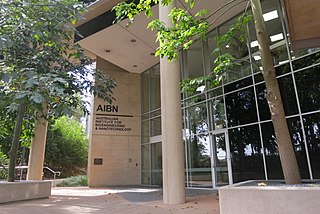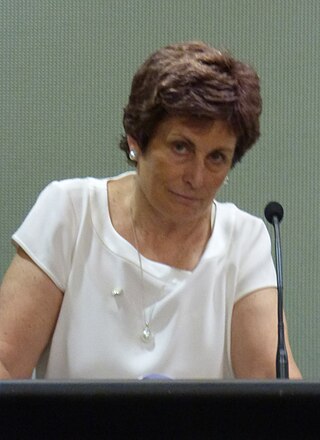
Cooperative Research Centres (CRCs) are an Australian Federal Government program involved in Australian scientific research. The CRC programme is administered by the Commonwealth Department of Industry, Science and Resources, which provides funding for projects through a series of funding rounds.
The Southern Education and Research Alliance (SERA), founded in 1999, is a strategic alliance formed between the University of Pretoria and the Council for Scientific and Industrial Research. The alliance collaborates locally and internationally with universities, NGO's, companies and multinational bodies in various research areas. Sera has a 50% shareholding in the Innovation Hub, a fully accredited technology park situated on 60 hectares of the university's experimental farm.

AWA Technology Services, name based on former name Amalgamated Wireless (Australasia) Ltd, is an Australian provider for technology related services. Throughout most of the 20th century AWA was Australia's largest and most prominent electronics organisation, undertaking development, manufacture and distribution of radio, telecommunications, television and audio equipment as well as broadcasting services.

The Eureka Prizes are awarded annually by the Australian Museum, Sydney, to recognise individuals and organizations who have contributed to science and the understanding of science in Australia. They were founded in 1990 following a suggestion by science journalist Robyn Williams.

The Poultry Co-operative Research Center, or Poultry CRC, is a joint venture established and supported under the Australian Government's Cooperative Research Centre Programme.
Elvin is an event routing service using a publish/subscribe event delivery model. It was developed at the Distributed Systems Technology Centre, an Australian co-operative research centre at the University of Queensland that operated from 1992 until mid-2006.

Sustainable Tourism Cooperative Research Centre (STCRC),was an Australian Cooperative Research Centre, headquartered in Gold Coast, Queensland, established by the Australian Government's Cooperative Research Centers Program to establish a competitive and dynamic sustainable tourism industry in Australia. It ceased to operate on 30 June 2010.
Brickworks is Australia's largest brick manufacturer, consisting of four divisions – Building Products Australia, Building Products North America, Industrial Property, and Investments.
The Australian Research Centre for Aerospace Automation (ARCAA) was a research centre of the Queensland University of Technology. ARCAA conducted research into all aspects of aviation automation, with a particular research focus on autonomous technologies which support the more efficient and safer utilisation of airspace, and the development of autonomous aircraft and on-board sensor systems for a wide range of commercial applications.
Science-to-business marketing entails the marketing of research conducted at research institutions, particularly universities, to industry or other interested parties. The acronym S2B follows a series of marketing acronyms used to shorten and popularise marketing specialisations, including (B2C) and (B2B).
The Faculty of Engineering and Information Technology at the University of Melbourne is the oldest engineering and information technology faculty in Australia. It was established in 1861, 8 years after the establishment of the University of Melbourne, and was made a Faculty in 1889. It teaches a substantial number of undergraduate and postgraduate students, as well as being a significant centre for engineering research, employing many leaders in their fields. In 2011 the Faculty of Engineering and Information Technology celebrated its sesquicentenary and the School developed a large range of events and activities to mark the occasion.

The FIDOAlliance is an open industry association launched in February 2013 whose stated mission is to develop and promote authentication standards that "help reduce the world’s over-reliance on passwords". FIDO addresses the lack of interoperability among devices that use strong authentication and reduces the problems users face creating and remembering multiple usernames and passwords.
Katherine Wilson is a molecular biologist and a marine scientist. She is also the executive director of the science division at the Office of Environment and Heritage (OEH), New South Wales. Wilson is responsible for the delivery of OEH's science program, which provides technical analysis, expert advice and research to support the NSW government's policy and program objectives in environmental management. As a member of the OEH Executive, Wilson guides delivery of services ranging from energy efficiency programs to management of national parks. Wilson is also a Board Member of the Low Carbon Living Cooperative Research Centre and Chair of the External Advisory Committee, Australian Rivers and Wetlands Centre, University of New South Wales.

The University of Queensland's Australian Institute for Bioengineering and Nanotechnology (AIBN) was established in 2003. It is one of four stand-alone research institutions at the university with more than 500 researchers, students and support staff. The inaugural Director was Peter Gray. The institute's second director, Professor Alan Rowan, commenced in 2016.

Leanna Read is an Australian biotechnology expert and businessperson. She was the fourth Chief Scientist of South Australia from 2014 to 2018. She was appointed in August 2014 as successor to Don Bursill and is the first woman to hold the position.
Raytheon Australia is the Australian arm of Raytheon Technologies. It was established in 1999 and has grown to become the largest US owned defence contractor operating in Australia. In 2012 Raytheon Australia recorded a turnover of $735.5 million. In 2015, Raytheon Australian was ranked fourth in Australian Defence Magazine's "Top 40 Defence Contractors" behind Thales Australia, ASC and BAE Systems Australia. As of 2016, the company's Managing Director is Michael Ward.
Rob Lewis is a South Australian marine scientist and retired senior civil servant. He discovered the first known upwelling system in southern Australia and was professionally involved in fisheries and aquaculture management for 38 years. He was head of South Australian Research and Development Institute (SARDI) from 1992 to 2010.
EM Solutions Pty Ltd is a satellite communications component company based in Brisbane, Queensland, Australia. Founded in 1998, it is involved in the research, design, and production of differentiated microwave and radiofrequency products and systems for satellite and broadband communications. EM Solutions provides components for both commercial and military customers with its subsidiary, EMClarity, specialising in the broadcast industry.
Cori Anne Stewart is an associate professor and Australian innovator, CEO of Advanced Robotics for Manufacturing Hub, an Artificial Intelligence and robotics company and a 2023–2024 Superstar of STEM, an initiative within Science and Technology Australia.







